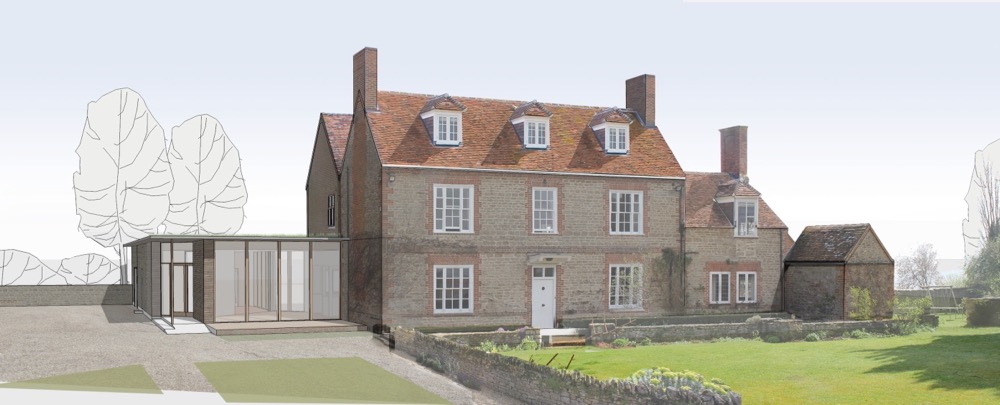In this blog post I’m going to give you a few tips on what you can do to make your building project more eco-friendly. With the way the UK government has approached the green building agenda in the last 5 years, you’d be forgiven for thinking that there’s no life left in it. There may be no more Code for Sustainable Homes, no more zero carbon homes policy nor Green Deal but there are lots of far-sighted clients who are driving the green building industry forward by expecting and asking for more.
If you’re building a new house then there are environmental standards (explained in the box below) that you can build to. But the fact is that we’re all staying put for longer and it’s refurbishment and extensions that most people are undertaking. I’m a great believer in the power of demand to facilitate change – the more eco-demanding clients become of their designers and builders then the faster the green building industry will grow. How then do you extend or refurbish your home in an environmentally-friendly way?
If you’re employing an architect then check out their ‘green’ credentials and don’t be fobbed off with the old maxim that “the building regulations are so strict nowadays that all new buildings are effectively eco.” I went through a couple of rounds of architects before finding one who is genuinely ‘green’ and not just good at ‘green-speak’. The things to look out for are as follows:
- An architect with Passive House certification is a good start and means they are trained to design structures that minimise heat loss and take advantage of free heat gains.
- An MSc in low carbon building design and modelling is helpful.
- Look at their previous projects to find out what elements inspire them and whether these fit with your priorities.
- Quiz them on the type of materials they design with – work out whether they’re up to speed with techniques coming across from Europe, especially Germany and Scandinavia.
In general (and this is probably horribly ageist and inaccurate) I find that younger architects are busier in the green-space and keener to embrace new techniques.
I couldn’t recommend our architects, Transition by Design, more highly. Environmental design is at the very heart of their practice and they fully embraced our goal to integrate a sustainable, ecological extension onto a heritage building. They’re active in the social/community space, working on projects to reduce homelessness and present alternatives to developer-led housing initiatives.

In any building project it’s easy to focus on the more exciting stuff such as Tesla Powerwalls, green roofs and heat-capturing showers but the single most important thing you can do (both for the planet and your wallet) is reduce the energy required to heat your house. You do this by applying a fabric first approach: focusing on insulation, air-tightness and controlled ventilation. Once you’ve prioritised this then you can decide what other eco-elements are important to you. It might be water recycling; or recycled or reclaimed materials; or renewable energy; or indoor air quality; or nature enhancement. Identify your priorities, rank them in order of importance and build them into the ethos of your project. After energy efficiency, my top priorities were renewables; reclaimed materials; and indoor air quality and, as a result, our project is not very water-conscious nor nature enhancing.
When it comes to employing a builder then look for one with experience of low energy, sustainable construction – The Association of Environment Conscious Building is a good place to start. If this isn’t possible (which is highly likely given the skills gap) then find one who is willing to learn about new materials and techniques. Our builders had never used the clay blocks that our extension is built of but they got a specialist in for a day to teach them – see my 27 February post, Goodbye to the Cavity Wall. Attention to detail is a key element of eco building and renovation. Make sure your builders are conscientious about sealing air gaps and preventing thermal bridges – an independent air-tightness test half way through the project is a good way of focusing their minds on this. To reduce the chances of the builder cutting corners, devise a generous schedule that doesn’t put them under unnecessary time pressure.
So to sum up: the architect or designer is key to eco-friendly refurbishment so make sure they know their stuff; don’t try to make everything eco – you’ll fry your brain and slow progress; and make sure your builders are prepared to embrace your environmental priorities.
For those of you interested in the standards for eco-construction there’a bit more information below.
| A Zero Carbon Home is one which doesn’t increase the amount of carbon dioxide in the atmosphere. All new homes in the UK were supposed to be zero carbon by 2016 but this was scrapped in 2015 despite many developers being ready to implement it. It’s estimated that it costs between 2-5% more to build a zero carbon home but when you weigh this up against having a warm, well-ventilated, cheap-to-run home it seems a fair trade-off.
A Passive House is one which has been built to German construction standards and not only has very low energy requirements but also meets high comfort and ecological targets. Passive Houses have heating requirements of less than 15 kWh/m2 per year which is about 80% less than a conventional house. It costs between 8-15% more to build a Passive House but many building projects (including ours) use Passive House principles but recognise that, for one reason or another, they will not be able to meet all the criteria. Enerphit is a building standard used for refurbishment projects. It uses many of the same principles as Passive House but recognises that it’s much harder to achieve the rigorous energy targets when retrofitting as opposed to building from scratch. Achieving all these standards relies on three principles:
|


Leave A Comment